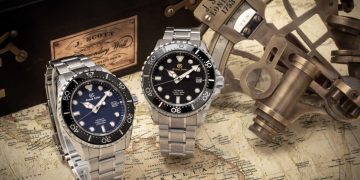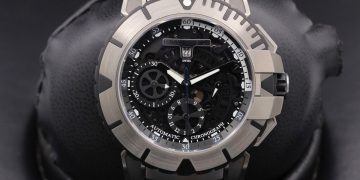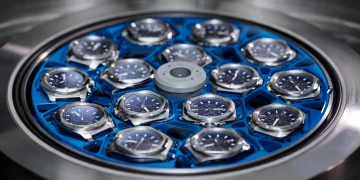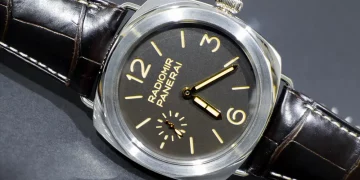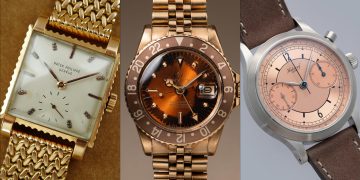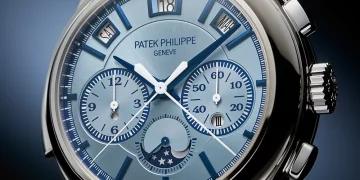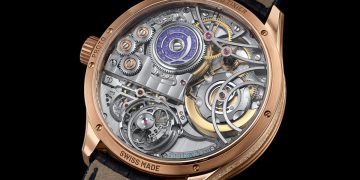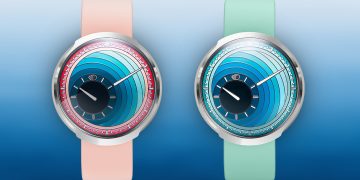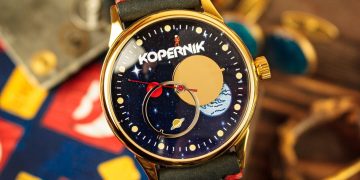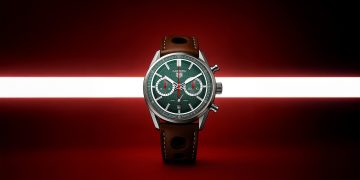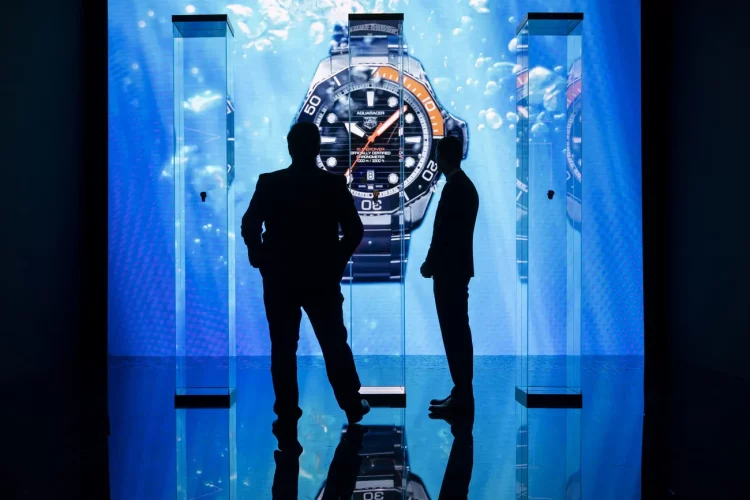In the world of luxury watches, a handful of brands have managed to maintain their dominance and prestige despite the passing of time. Brands like Rolex, Patek Philippe, Omega, and Audemars Piguet are widely recognized for their long histories and continue to lead the watchmaking industry. Their success and market leadership are not simply the result of their historical significance, but rather a combination of factors that allow them to evolve, adapt, and stay relevant in a constantly changing market. But what exactly has allowed these brands to remain at the top for so long?
This article explores the key reasons behind the enduring success of long-established watch brands and how they continue to dominate the luxury watch market, even in the face of new challenges and changing consumer preferences.
1. Heritage and Tradition: The Power of Legacy
a. Building Trust Over Time
A brand’s heritage plays a pivotal role in establishing trust and credibility in the market. For many luxury watch buyers, owning a timepiece from a well-established brand is a symbol of reliability and quality. Over decades, these brands have consistently demonstrated their ability to deliver exceptional craftsmanship, precision, and luxury. This long history has become synonymous with trust and prestige—attributes that attract consumers who are looking for more than just a watch, but a piece of history and craftsmanship.
For example, Patek Philippe, established in 1839, is renowned for its grand complications and high-end watches that are passed down through generations. The brand’s commitment to precision engineering and its exclusive reputation have made it a leader in the luxury watch industry. Patek Philippe’s legacy serves as a reassurance to buyers that they are investing in a brand with a long history of producing timeless pieces.
Similarly, Rolex has cemented its status as a symbol of luxury and success thanks to its long history and innovative designs. The Rolex Oyster, introduced in 1926, was the world’s first waterproof watch and marked the beginning of a series of groundbreaking innovations that would define the brand. Rolex’s heritage of reliability and excellence in timekeeping continues to be a cornerstone of its success in today’s market.
b. A Rich Story that Resonates with Consumers
History not only brings with it trust but also an emotional connection. Watch buyers often seek brands that have a rich legacy, because these brands represent a story, a journey of craftsmanship, innovation, and achievement. These stories, whether tied to an iconic watch model or an achievement in the history of horology, give consumers more than just a watch—they provide a piece of luxury with emotional significance.
For instance, Omega’s history as the official timekeeper for the Olympic Games and the moon landing makes it much more than just a brand of high-quality watches. Consumers are drawn to the heritage of precision that has been associated with significant moments in history. The connection to these milestones fuels brand loyalty and keeps Omega relevant across generations.
2. Innovation: Blending Tradition with Modernity
a. Evolving with Technology
While these brands have long histories, they do not rest on their laurels. Instead, they continuously push the boundaries of innovation, combining their traditional methods with the latest technological advancements. By doing so, they can continue to meet the changing demands of modern consumers while maintaining their reputation for excellence.
Take Audemars Piguet, for example, a brand with a rich history of creating complicated mechanical timepieces. The company is known for blending modern design with traditional craftsmanship, and this has been key to its continued leadership in the luxury watch market. The Royal Oak, introduced in 1972, was a revolutionary design that broke traditional norms and is still one of the brand’s flagship models today. Despite its deep ties to history, Audemars Piguet continues to innovate with new materials, such as titanium and ceramic, and cutting-edge complications, ensuring that it remains at the forefront of the industry.
Similarly, Omega has embraced new technologies to improve performance while staying true to its legacy of precision. The introduction of the Co-Axial escapement, developed by the legendary horologist George Daniels, revolutionized watchmaking by reducing friction and improving the longevity and accuracy of Omega’s movements. Omega’s ability to integrate state-of-the-art technology with its heritage of excellence has been one of the keys to its ongoing market leadership.
b. Timeless Designs with a Modern Twist
Innovation also comes in the form of design. Long-established watch brands are adept at updating their iconic models to reflect contemporary tastes while preserving the essential characteristics that have made them timeless. Rolex’s Submariner and Daytona, for example, have undergone updates in terms of material use and technical features but still maintain the same distinctive designs that made them so popular in the first place.
The ability to adapt their designs to meet modern preferences while maintaining the core brand identity ensures that these brands can stay relevant without losing the appeal of their heritage. As the luxury market evolves, consumers are increasingly drawn to timepieces that offer the perfect balance of traditional craftsmanship and modern functionality—and these watchmakers have mastered that balance.
3. Brand Recognition and Prestige
a. Strong Brand Identity
Another reason that long-established brands maintain market leadership is their powerful brand identity. Over the years, they have built a reputation for exclusivity, precision, and luxury. This strong identity is carefully curated through marketing, craftsmanship, and iconic designs, and it resonates deeply with consumers.
Rolex, in particular, has created an almost mythic status for itself through its consistent marketing strategy, sponsorships in sports such as tennis and yachting, and its association with high-profile figures and events. The brand is so closely linked to success and prestige that owning a Rolex has become a symbol of achievement, and this prestige continues to propel its dominance in the luxury watch market.
b. Resonating with New Generations
Despite their long histories, these brands have successfully remained relevant to new generations of consumers. Brands like Rolex, Audemars Piguet, and Omega have adapted their marketing strategies and product offerings to appeal to younger buyers without compromising their core values. By maintaining a focus on timeless quality while also introducing modernized designs and limited-edition models, these brands are able to attract a younger demographic that is looking for both style and substance.
For instance, Audemars Piguet has gained significant popularity with younger collectors, especially with its Royal Oak Offshore and limited-edition models that speak to both the luxury and sporty sides of watchmaking. The brand’s bold marketing and partnerships with artists and celebrities have helped it maintain a strong presence in the market.

4. Exclusivity and Limited Supply
a. Maintaining Scarcity
Another crucial aspect that has helped long-established brands stay at the top is their ability to maintain an air of exclusivity. Unlike many mass-market brands, luxury watchmakers keep their production limited, ensuring that their watches remain highly coveted and in demand. The limited availability of high-demand models, especially from brands like Patek Philippe and Rolex, creates an environment of scarcity, making these watches even more desirable.
This limited production strategy not only maintains the value of the timepieces but also makes them more desirable among collectors and enthusiasts. Rolex’s waiting lists for certain models are legendary, and this sense of exclusivity drives demand, ensuring that these brands maintain their position at the top of the market.
5. Adaptability in a Changing Market
a. Responding to Consumer Preferences
The luxury watch market has changed dramatically over the years. Consumers today are more informed and demand more from their purchases, including an emphasis on sustainability, technology, and brand transparency. Brands with long histories have been able to respond to these shifts in the market by adapting their strategies and product offerings.
For example, many brands now offer eco-friendly materials and sustainable practices to meet the growing demand for ethical consumerism. Rolex, for instance, has shifted towards using ethical gold in its watches, while Omega has introduced eco-friendly packaging. These changes ensure that traditional brands remain relevant to modern buyers, who are increasingly concerned with the environmental and ethical impact of their purchases.
6. Conclusion: The Combination of Legacy and Innovation
The continued success and market leadership of long-established watch brands can be attributed to their deep-rooted history, strong brand identities, commitment to innovation, and ability to adapt to changing market conditions. These brands have built a foundation of trust and prestige that resonates with consumers, while constantly pushing the boundaries of technology and design to remain relevant.
Ultimately, it is the balance between honoring their rich heritage and embracing modern trends that has allowed these iconic watchmakers to maintain their dominance in the luxury watch industry. As the market continues to evolve, these brands will undoubtedly remain at the forefront of the industry, drawing on their legacy and innovative spirit to ensure continued success.


